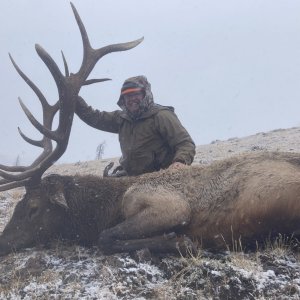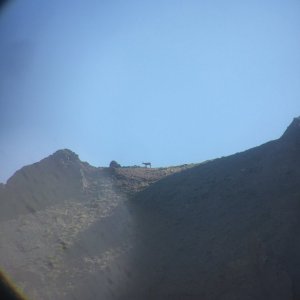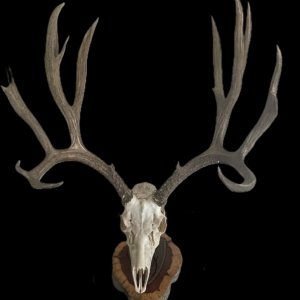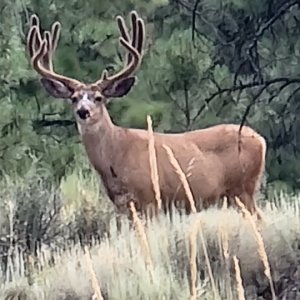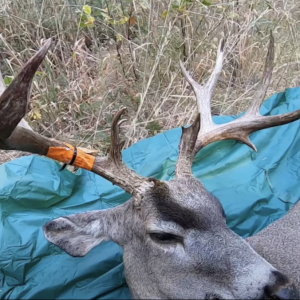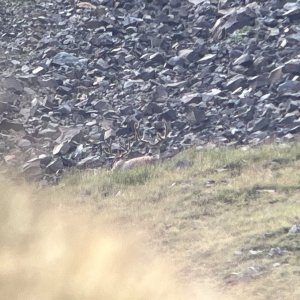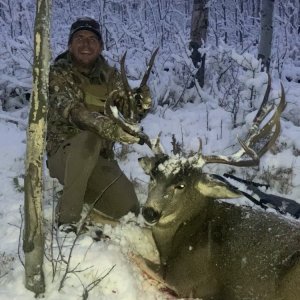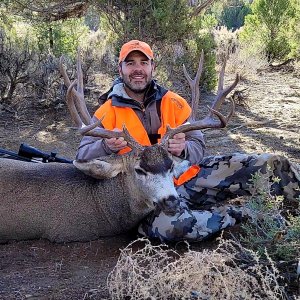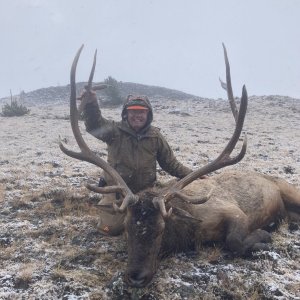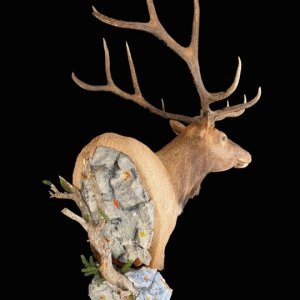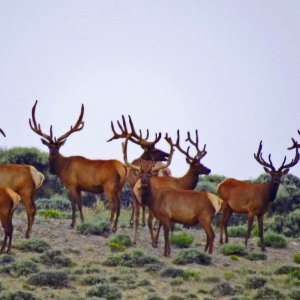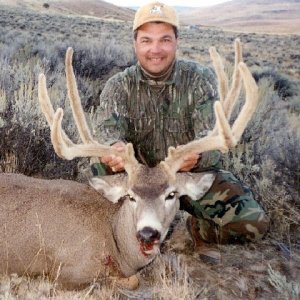Good questions.
"Another question sparked by one of your comments. You say that "pregnancy rates" are not effected by low buck:doe ratios."
There has been a lot of research on breeding synchrony, etc. for elk (Starkey project), but that level of data does not exist for mule deer. As we have not harvested does in this region for almost a decade, we don't have current specific breeding date data. However, there are a number of surrogate variables and info from other areas that help address the issue. One is that when capturing newborn fawns, we do see a very distinct birth pulse in early June, indicating a compressed rut period. Another is looking at fawn ratios during early winter and again in late winter/early spring across the range of mule deer. Analyses of these ratios compared to buck ratios don't show a relationship (again, CO did a fairly exhaustive analysis and buck ratios failed to explain changes in fawn ratios).
Getting back to the previous question of summer fawn survival. It varies, just like winter survival. In southeast Idaho 45-55% summer mortality seemed about normal with a little more than half attributed to predation and somewhat less than half to disease, malnutrition, accident, etc. Our sample size for last year's summer fawns here was small (11), but we saw high survival in the Salmon area. So far this year, with a larger sample, we are again seeing high survival for the first 2 months after fawning.
"If science states that 3 to 5 bucks will adequately breed 100 does is the geography and terrain of the land factored in ? What factors or criteria set up determining buck:doe ratios?"
No, topography is not factored in. But, data has been collected throughout the range of mule deer and encompasses a wide variety of terrain and habitat. I'm not saying there's no influence of terrian, but from a management perspective it's probably a fairly small source of variation that is strongly overridden by doe (and therefore fawn) nutrition, weather, predation, etc.
I'm not sure I entirely understand the second part of the question. If you mean criteria for setting up objectives for ratios , as I mentioned earlier, that's largely a social issue. It is essentially up to the public to determine what they want to see for buck ratios. This should be done during a planning process - when an agency gathers input for a 5- or 10-year deer plan. And it's critical to understand the tradeoffs for any given objective. Habitat, road density, escape cover, season timing, etc. all play roles in how hunting will impact buck ratios. In general, lower buck ratio objectives will allow more opportunity and higher objectives will allow less opportunity. But, there is not a linear relationship between ratios and opportunity. That is, reducing hunter numbers by 50% does not give a 50% increase in buck ratios. Depending where you start, to obtain "high" buck ratios, you must often drastically reduce "normal" opportunity - something like telling 80% of hunters they can't hunt. Take Utah as an example, to move to a statewide minimum of 15 bucks/100 several years ago, more than 2/3 of hunters were essentially told they could no longer hunt deer every year. Getting off topic a little, but a question to consider is whether some of those people gave up hunting entirely and if that "loss" of hunters had a positive or negative effect on hunting and the political "clout" of hunters? Another broad factor to consider is what tradeoffs, in terms of services to hunters, herd monitoring, research, etc., are you willing to give up or pay more for when hunter numbers are significantly reduced? Herds can be managed in a variety of ways, but every management scenario has pros and cons depending on your perspective.
Which brings us back full circle to the original post and providing input on the issues that are important to mule deer hunters. Please do!

